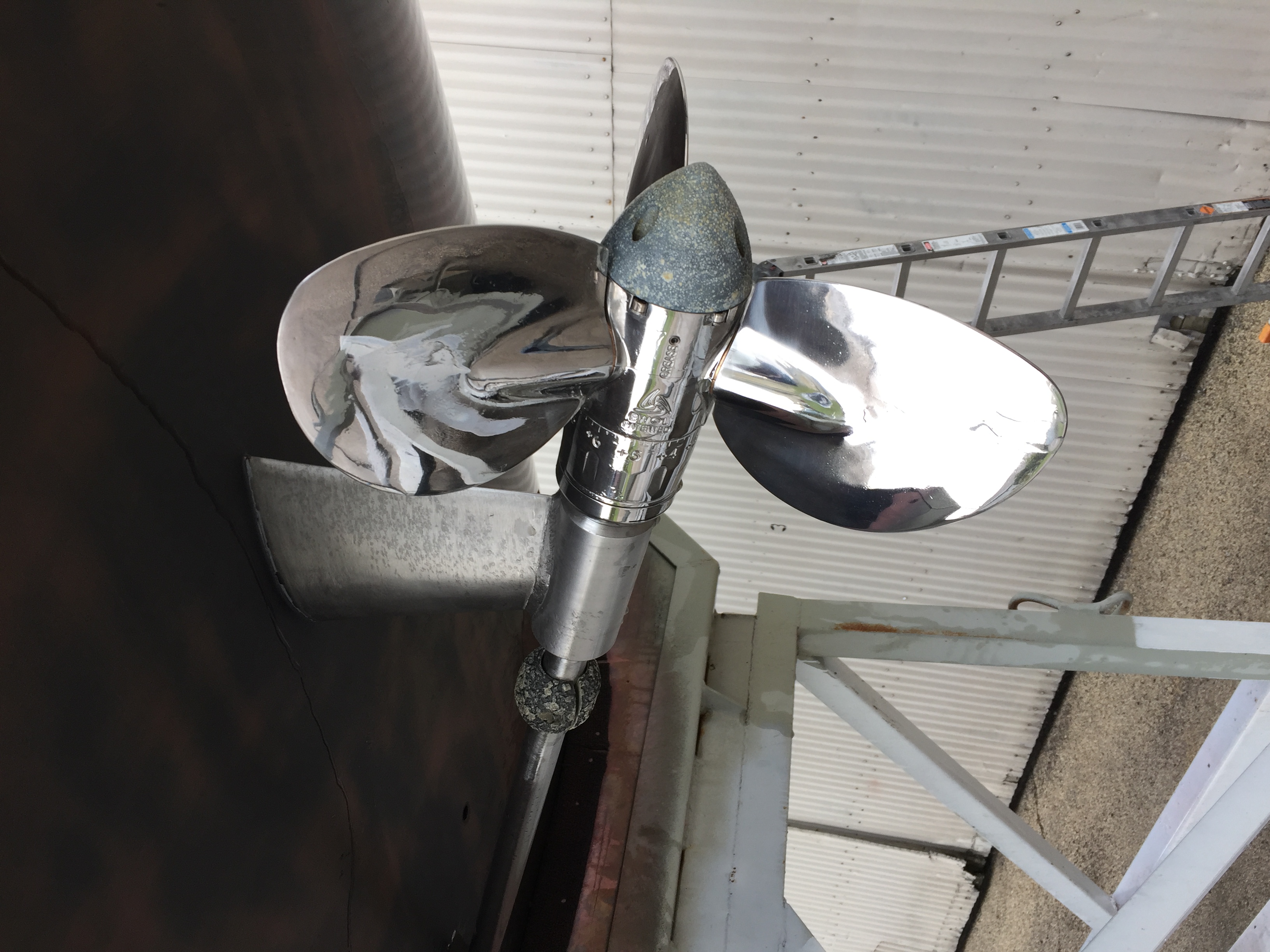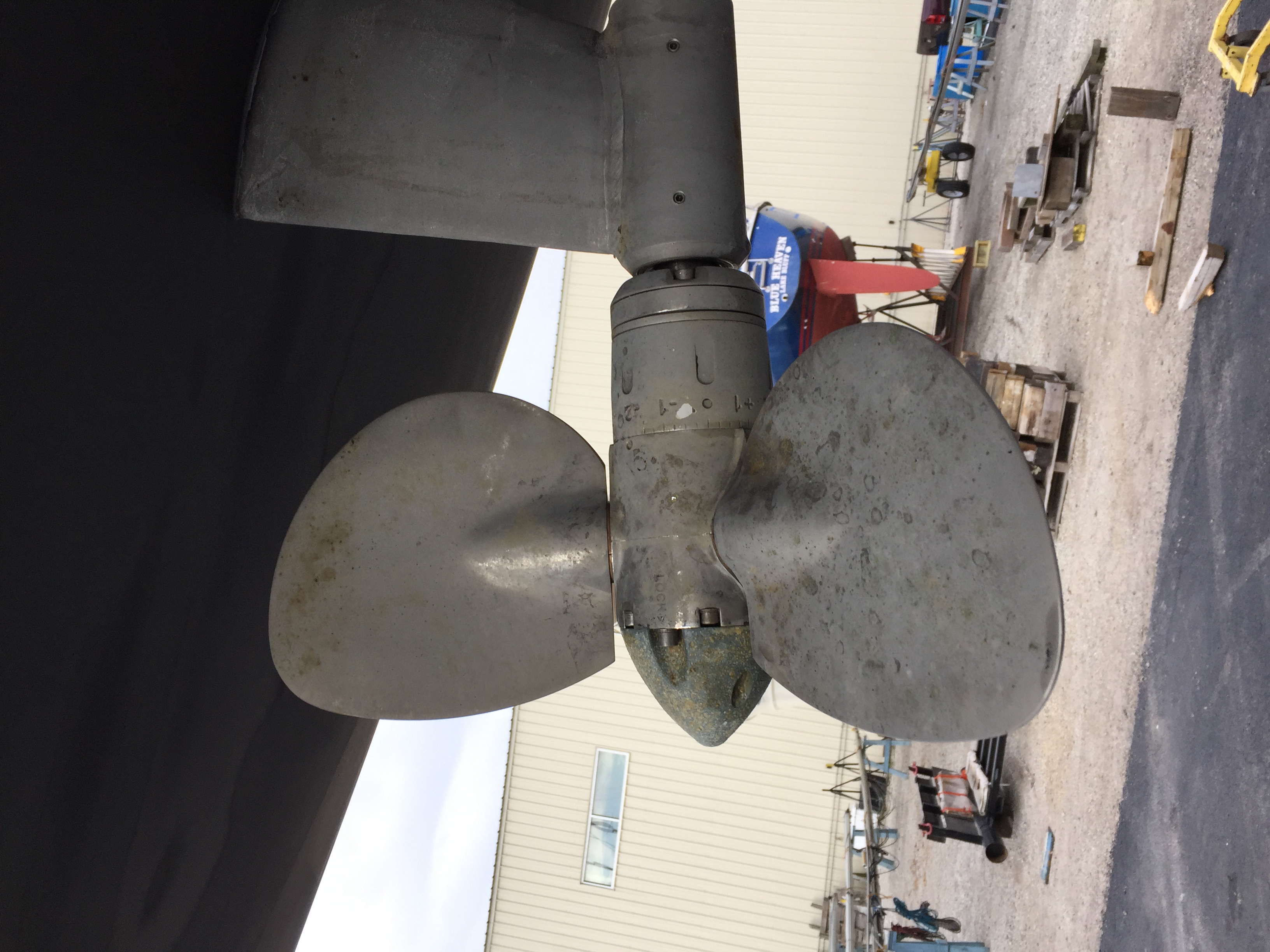Ich dachte, ich würde Ihnen eine kurze E-Mail schreiben, um Ihnen mitzuteilen, dass ich letzten Freitag mein Segelboot Exeter aus dem Wasser gezogen habe und die Gelegenheit hatte, den Propeller nach einem Sommer in Chicago zu inspizieren. Anbei einige Fotos. Als das Boot zum ersten Mal auf dem harten war, war der Boden mit einem dünnen Schleim ohne größeres Wachstum bedeckt. Dies ist üblich für Boote im Michigansee. Nach einer Druckwäsche sah der Propeller wie in Foto 1 gezeigt aus. Nach einer schnellen, milden Säurewäsche sah der Propeller wie in Foto 2 gezeigt aus. Sieht aus wie neu! Das einzig Interessante war, dass meine Magnesiumanode auf der Propellerwelle ziemlich stark verbraucht war. Möglicherweise habe ich immer noch ein streunendes aktuelles Problem auf dem Dock. Es hat seinen Job gemacht und es schien keine Korrosionsprobleme mit dem Propeller zu geben.
Insgesamt bin ich also sehr zufrieden mit meinem Orion-Propeller. Ich habe die Steigung auf 20 Grad geändert und werde sehen, wie nächstes Jahr funktioniert. Was ich EWOL empfehlen würde, wäre, auch die Spinneranoden am Propeller aus Magnesium anzubieten. Dies würde den Propeller beim Segeln in frischem Wasser doppelt schützen. (Hinweis: Wir haben jetzt Magnesiumanoden in unserem Shop online verfügbar.)
2020-10-18 JN – USA
Es funktioniert gut und die Leistung scheint besser zu sein als das D mit drei Klingen, das ich ersetzt habe. Es ist ruhiger beim Fahren und scheint etwas schneller zu sein, wenn es nur im Leerlauf fährt. Ich habe die Steigung immer noch nicht perfekt eingestellt. Beim Start habe ich eine 18-Grad-Klingeneinstellung gewählt, die etwas niedrig ist. Der Motor (Yanmar 2GM20F) kann problemlos bis zu 3600 U / min drehen und die Bootsgeschwindigkeit beträgt etwas mehr als 6 Knoten. In Kürze werde ich es auf 19 Grad einstellen und sehen, wie das funktioniert.
2020-08-21 JN – USA
Original Text
I thought I would drop you a quick email to let you know that I pulled my sailboat, Exeter, out of the water last Friday and had a chance to inspect the propeller after a summer’s worth of sailing in Chicago. Attached are several photos. When the boat first was on the hard, the bottom was covered in a thin slime with no major growth. This is usual for boats in Lake Michigan. After a pressure wash, the propeller looked as shown in photo 1. After a quick, mild acid wash, the propeller looked as shown in photo 2. Looks like brand new! The only interesting thing to report was that my magnesium anode on the propeller shaft was quite severely consumed. I still may be having a stray current issue on the dock. It did its job and there didn’t seem to be any corrosion issues with the propeller.
So, overall, I am very pleased with my Orion propeller. I changed the pitch to be right on 20 degrees and will see how this works out next year. The only thing I would recommend to EWOL would be to also offer the spinner anodes on the propeller to be made out of magnesium. This would double protect the propeller for sailing in fresh water. (note: we have now magnesium anodes available in our shop online)
2020-10-18 JN – USA
It is working fine and the performance seems better than the three bladed M… that I replaced. It is smoother when motoring and seems to be a little bit faster when just motoring at idle speed. I still don’t have the pitch set perfectly. At launch, I went with a 18 degree blade setting which is a little bit low. The engine (Yanmar 2GM20F), easily can rev up to 3600 and the boat speed is a little bit over 6 knots. Shortly, I will be setting it to 19 degrees and see how this works.
2020-08-21 JN – USA







